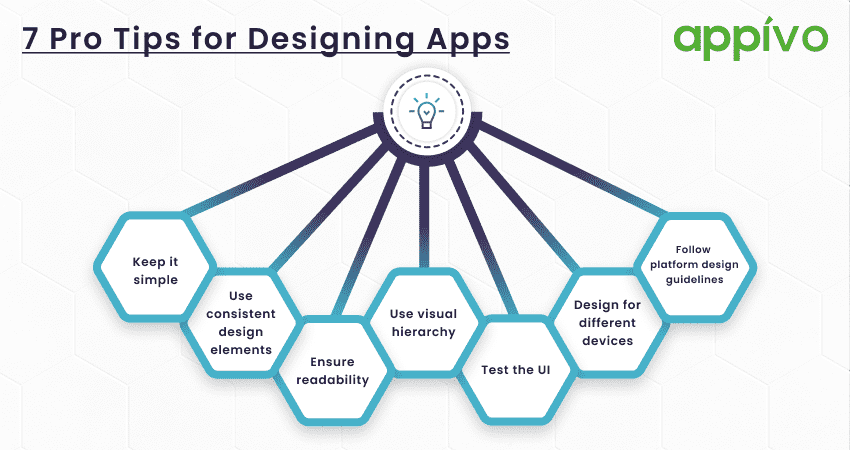
7 Pro Tips for Designing Apps
May 16, 2023
What’s the point in building an app that’s ugly or hard to use? Designing a good app user interface (UI) is important to ensure that your app is engaging, intuitive, and easy to use. Whether you’re a UI expert or a backend developer starting to branch out, these tips for designing apps will help to improve your UI.
When it comes to software, it takes a lot of work to make an intuitive interface. The reality is that most apps fall somewhere between horrible and stellar. Read on for tips for designing apps that will push your app into the stellar zone.
Here are 7 pro tips for designing apps:
1. Keep it simple
The app UI should be simple and intuitive, with clear and easy-to-understand navigation. Avoid cluttering the UI with unnecessary elements, as this can make the app difficult to use. Don’t bombard the users’ eyes with every possible option/feature imaginable. As much as possible, every screen should have a clear primary purpose.
2. Use consistent design elements
Use consistent design elements, such as fonts, colors, and icons, throughout the app. This will help users understand the app’s structure and make it easier to navigate. If you’re using icons or illustrations, get them from the same set or the same illustrator. Don’t mix shaded, drop-shadowed, flat, etc. visual elements.
3. Ensure readability
Make sure the text is easily readable and legible. Use appropriate font sizes, line spacing, and contrast to ensure that the text is easy to read on different devices. Also, never use Comic Sans. 🙂
4. Use visual hierarchy
Use visual hierarchy to guide the user’s attention to the most important elements of the UI. This can include using different colors, sizes, or fonts to differentiate between different types of content. It’s also important to be consistent with the hierarchy throughout the app.
5. Test the UI
Test the UI with real users to identify any usability issues or areas for improvement. This can include usability testing, A/B testing, or other user research methods. Users will tell you if they think text is difficult to read or layouts are confusing. Most people love to give feedback; the trick is to listen.
“Design like you know everything. Listen to feedback like you know nothing.”
6. Design for different devices
Design the UI to work well on different devices, including smartphones, tablets, and desktops. Consider the different screen sizes and resolutions, as well as the different ways that users interact with the app. For example, does the app need to be locked in a specific orientation or can it be used in portrait or landscape?
7. Follow platform design guidelines
Follow the design guidelines for the platform you are designing for, such as Android or iOS. This will ensure that the app has a consistent look and feel with other apps on the platform, making it easier for users to use.
By following these tips for designing apps, you can create a good app UI that is engaging, intuitive, and easy to use. These tips are fairly timeless but design guidelines (what constitutes good design) change over time. As tastes and technology change, there will be new conditions to consider. Device form factors, screen size and resolution are just a few things that tend to change rapidly. Remember to continuously iterate and improve the UI based on user feedback and testing.
Want more tips for designing apps? Apple has great design resources. Here’s a link to some UI Dos and Don’ts from Apple.
Ready to build an app? Start a free trial today or contact Appivo to learn more. Not sure if your project is a good fit for the Appivo low-code platform? Just ask us! We’ll provide a free evaluation and outline your options.
Recent Post
Top Five Benefits of Custom Software
June 13, 2023
7 Pro Tips for Designing Apps
May 16, 2023
What is low-code?
April 18, 2023
8 Good Ideas for Improving App Adoption
March 21, 2023
Top 5 Tips for a Great Low-Code Project
February 21, 2023





